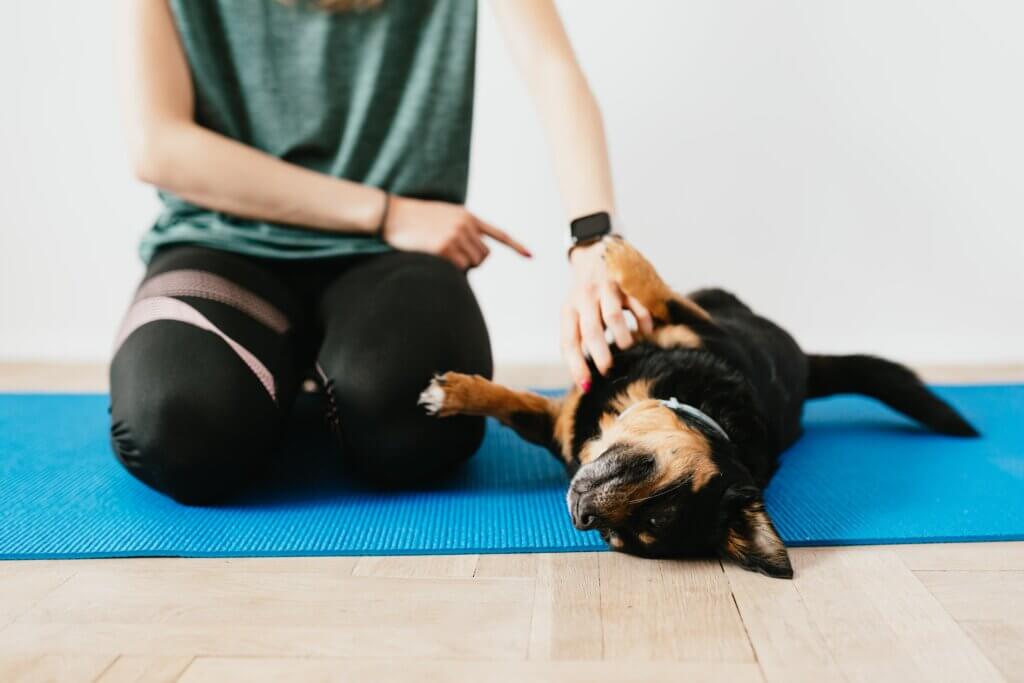What You Need to Know About Dog Obedience Training

Whether you have a new puppy at home, adopted an older dog, or have noticed some behavior issues, you should consider dog obedience training.
No one wants an out-of-control dog. Dogs that haven’t had obedience training are difficult. You can’t take them out anywhere for fear of them attacking other dogs or barking incessantly. You hesitate to invite people to your home because your dog may jump all over them. You dread taking your dog to the vet or groomers because of their behavior.
The AKC explains, “Obedience exercises are important for all dogs, especially high-energy breeds that need mental stimulation as well as physical exercise. Simple behaviors like sit, down, stay, come, and leave it are essential for a well-behaved pet.”
But no matter how much home training you do, some dogs (and dog parents) just do better in official dog obedience training classes.
Read on to see if it is time for some official obedience classes.
Signs It’s Time for Dog Obedience Training
Ideally, all dogs should have some form of obedience training. However, some dogs are in serious need of it.
Does your dog exhibit any of the following behaviors?
- They growl when someone gets close to their personal possessions (i.e., toys, bedding, or dishes).
- They bark excessively.
- They pull on their leash, or they run in circles and get tangled in their leash. Basically, if they have poor leash manners, they need to go to obedience class.
- They chew and destroy items in your home.
- They are aggressive towards other dogs.
- They show signs of separation anxiety.
- They ignore or do not obey basic commands, such as “Come.”
- They seem very frightened by new environments.
- They have pee and poop accidents in the house.
- They greet guests by jumping on them.
- They bite, growl, or snap at humans.
While many dogs can be taught obedience basics at home, it is beneficial to seek professional help for some of the trickier skills (such as walking on a leash).
It’s not just about having a well-behaved dog; it’s also about teaching your dog skills to keep him safe. If your dog doesn’t know (or won’t follow) basic commands, it jeopardizes his safety.
More importantly, if your dog is not taught how to socialize with other dogs and humans properly, they may hurt others.
What to Expect From Dog Obedience Training
It’s important to have realistic expectations when it comes to obedience classes. Often, dog parents mistakenly believe obedience classes will change their dog overnight. That’s not true. Much of how your dog responds depends on the type of class.
AKC explains, “Behaviorists can also be trainers and/or veterinarians, but not always. Trainers are equipped to handle symptoms, but not necessarily the underlying causes of the symptoms. Training other behaviors and getting a dog used to being alone, for example, can help reduce separation anxiety. The root cause, however, would likely need to be determined by a behaviorist, who could then refer you to a trainer if he or she was not able to help with the training issues.”
For example, a basic dog obedience class will cover things, such as:
- Commands: sit, stay, lie down, and rollover
- Not to pull on the leash while walking
- Not to jump on other dogs or people
- Not to chew on furniture
- To come when called
- How to socialize with new people and in new places
However, basic obedience classes will not treat excessive barking or separation anxiety. These types of serious obedience issues would be better addressed in a class led by a behaviorist.
What to expect also depends on the environment. You can try teaching obedience at home yourself, hire a one-on-one trainer, send your dog to a doggy daycare that teaches the basics or enroll your dog in an overnight boarding obedience camp.
Tips for Making Dog Obedience Training Successful
You may have heard someone say, “You can’t teach an old dog new tricks.” This isn’t true – especially when it comes to obedience training. While it is beneficial to introduce young dogs to obedience training, even older dogs can be taught how to behave properly.
The key is to stay consistent. Make sure you use the same training techniques at home.
Hill’s explains, “For obedience classes to work, you need to go beyond the one-hour-a-week class and practice regularly with your dog at home. It’s also important that the entire family is on board and everyone is consistent with the rules. If Mom says the couch is off limits, for example, it needs to be off limits at all times. If Dad or one of the kids invites your pup onto the couch, even as a one-time treat, this will only confuse your dog and undermine his training.”
And use positive reinforcement!
Since obedience classes don’t teach dogs how to go number two on a toilet, let Super Scoopers handle their backyard messes. Sign up for service today!




